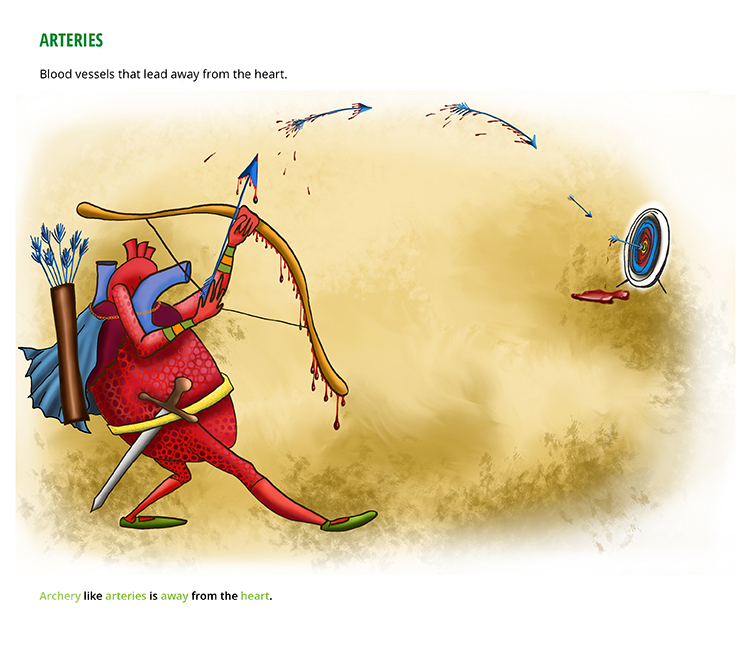Mammoth Biology
Detailed IndexProblems recalling those big biology words and concepts? Take heart, if you're looking for some easily digestible facts and pithy pictures that are a treat for your eyes, get your teeth into our Mammoth biology brain booster now. Banish your revision blues and refresh those neural networks with new ways of remembering. . .
Click here to get started.

Biology
-
Vocabulary (you must learn)
Characteristics and classifications
-
The characteristics of living things
-
The five kingdoms
-
Classification
- Classification
- Anatomy and eidonomy
- Traditional methods - Limitations
- Taxonomy based on DNA
- DNA base sequencing
- Protein comparison
- DNA Hybridisation
- DNA "Barcoding"
- Classification should reflect evolutionary relationships
- Phylogenetic tree
- Results of new methods of testing
- Further predictions
- DNA technology vs traditional classification methods
Classification of animals
Skeletons and Bones
-
Endoskeletons and Exoskeletons
- The ear
Muscles
-
Tendons, Ligaments and muscles
Plants
-
Classification of plants
- How plants are categorised
- What is a spore?
- Seed categorisation
- Plants that make seeds
- Flowering plants
- Differences between moncots and dicots
- Monocots and dicots - the leaf
- Monocots and dicots - Stem vascular bundles
- Examples of monocotyledons
- Examples of dicotyledons
- Categorising spores
- Examples of plants that make spores
- Summary of Plants
- Test yourself
-
Sexual reproduction in plants
- Flowers
- Sepal
- Detailed process of flower fertilisation
- The anther produces pollen
- Pollen is transferred to the stigma
- The pollen germinates
- Pollen grows a pollen tube
- The pollen tube grows through the style
- The pollen tube extends
- The pollen nucleus with the egg in the ovule
- Ovary - fruit
- Stamen
- Male or Female
- Fertilisation of flowers
- What is the difference between carpels and pistils
- Auxin
- Insect and wind pollinated flowers
- Seed dispersal
-
Tropism in plants
-
Transport in plants
Cell structure and organisation
Movement in and out of cells
-
Osmosis
-
Active transport
-
Diffusion
Organs and systems
-
Kidneys - The Renal System
- Kidneys
- Kidneys clean the blood
- What kidneys look like
- Kidney size and position
- What's inside a kidney?
- The hilum is the kidney's gateway
- Nephrons
- What a nephron looks like up close
- Tubules
- After the tubule
- Summary of tubule to bladder story
- Blood flow through the kidneys
- Peritubular capillaries
- Tubular secretion
- All in a days work
Respiration
-
Plants
- Introduction
- Photosynthesis and respiration
- To remember photosynthesis makes glucose
- To remember respiration uses glucose
- How to remember the symbol formula for glucose
- Balancing the symbol formula for photosynthesis
- Summary: Photosynthesis and respiration
- Fungi and Yeast Respiration
- Fermentation is Anaerobic Respiration
Nutrition and digestion
- Process of digestion
-
Digestion
-
Electrolytes in the body
- The structure of the tooth
Coordination and response
- Coordination and response
-
Sensory receptors
-
Responding to nerve impulses
- Nodes of Ranvier
- Synapse
- Neurotransmitter
- Synaptic vesicle
- Receptor molecules (or dendritic receptors)
- Somatic system
- Autonomic system
Organisms and their environment
-
Ecology and ecosystems
- Ology the study of
- Habitat - Place
- Community - Living things in one place
- Ecology - The study of habitat and community
- Ecosystem - A self sustaining habitat and community
- Environment - Surroundings
- Environmental factors - Surrounding influences
- Predator & Prey
- Scavenger - Corpse eater
- Extinction - Eradication
- Herbivore - Plant eater
- Carnivore - Meat eater
- Territory - Defended area
-
Ecosystems, organisms and their environment
- Population size
- Climate
- Omnivore
- Decomposer
- Culture
- Competition
- Inter
- Intra
- Interspecific competition
- Intraspecific competition
- Food chain
- Food web
- Consumer
- Producer
- Primary
- Primary Consumer
- Secondary
- Secondary consumer
- Tertiary
- Tertiary consumer
- Trophic - Nutrition
- Trophic levels
- Energy flow
- Co-evolution
- Commensalism
- Niche
- Limiting factors
- Mutualism
- Bio
- Biotic
- Abiotic
- Biomass
- Biome
- Biosphere
- Biodiversity
- Life expectancy
- Reproduction rate
- Mortality rate
- Infant mortality rate
- Adaptations
Variation and selection
-
Variation and selection definitions
- Mutation
-
Adaptive features
-
Selection
DNA, genetics and inheritance
-
Gregor Mendel
-
Gametes = Sex cells
- Cell division
- Meiosis
- Mitosis
-
Remembering meiosis and mitosis
Diseases and immunity
